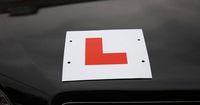The new driving test rules introduced by the Driver and Vehicle Standards Agency (DVSA) come into effect today, May 6, 2025, marking a significant shift in how learner drivers are assessed across the UK. This three-month trial aims to enhance the practical driving experience for thousands of learners at 20 designated test centres, focusing on increasing exposure to higher speed and rural roads.
Statistics reveal that a staggering 48% of collisions involving young car drivers occur on rural roads, compared to 42% for drivers of other ages. In response to these alarming figures, the DVSA is implementing changes designed to better prepare novice drivers for the challenges they will face on the road.
The trial will not alter the content or overall duration of the driving test, but it will introduce three major updates to the test structure. These changes are intended to create a more realistic driving environment for learners, allowing them to gain essential experience where they are most vulnerable.
One of the primary changes is the reduction of stops during the driving test from four to three. Currently, learners are required to make four stops on lower-risk roads, which can limit the distance covered during the test and restrict access to higher speed roads. By decreasing the number of stops, the DVSA aims to provide more flexibility in test routes, enabling learners to spend additional time on rural and high-speed roads.
Additionally, the frequency of emergency stop exercises will change from one in three tests to one in seven. This adjustment reflects advancements in vehicle safety technology, such as the mandatory anti-lock braking system (ABS), which has improved the safety of modern cars. Reducing the number of emergency stops will further allow learners to experience more high-speed driving situations, which are critical for their development as safe drivers.
Another significant modification involves extending the duration of the independent driving section that utilizes satellite navigation. Currently set at 20 minutes, the independent driving segment can now potentially last for the entire duration of the test. This change is designed to better reflect real-life driving conditions, as many new drivers rely on GPS systems for navigation.
Transport Secretary Heidi Alexander emphasized the importance of these changes, stating that they are part of broader government efforts to tackle rural road collisions involving young drivers. She noted, "This trial is about giving learners a more realistic experience before they pass, especially in the types of environments that pose the biggest risk to them."
For learners scheduled to take their tests at the participating centres, the DVSA will proactively reach out to provide reassurance about the new trial. Officials will clarify that the skills required to pass the driving test will remain unchanged, despite the adjustments to the structure.
The 20 driving test centres involved in this trial are located across Great Britain, including Avonmouth, Bishopbriggs, Bolton, Cambridge, Cardiff, Dudley, Halifax, Hendon, Hereford, Hornchurch, Isleworth, Maidstone, Middlesbrough, Musselburgh, Norris Green, Norwich (Peachman Way), Nottingham (Chilwell), Oxford, Portsmouth, and Wakefield. These centres were selected to reflect a diverse range of driving environments, ensuring that learners from various regions can benefit from the trial.
As the trial progresses, the DVSA plans to analyze the results and share findings with the driving instruction industry. This initiative aims to inform future driving test practices and potentially lead to permanent changes that enhance driver safety.
In addition to these changes, the DVSA has recently announced measures to increase the availability of driving tests, making an additional 10,000 tests available each month. This effort aims to reduce waiting times for learners eager to get on the road.
Overall, these updates to the driving test are a proactive step towards improving road safety for young drivers, who statistically face higher risks on rural roads. By providing more realistic training scenarios, the DVSA hopes to equip new drivers with the skills and confidence needed to navigate these challenging environments safely.


